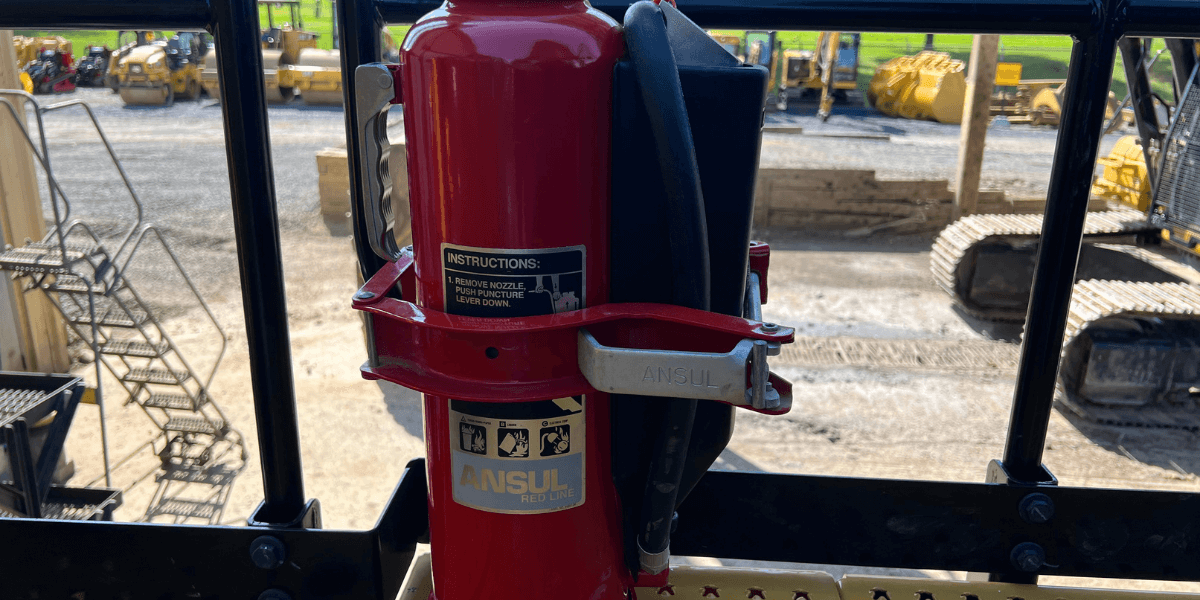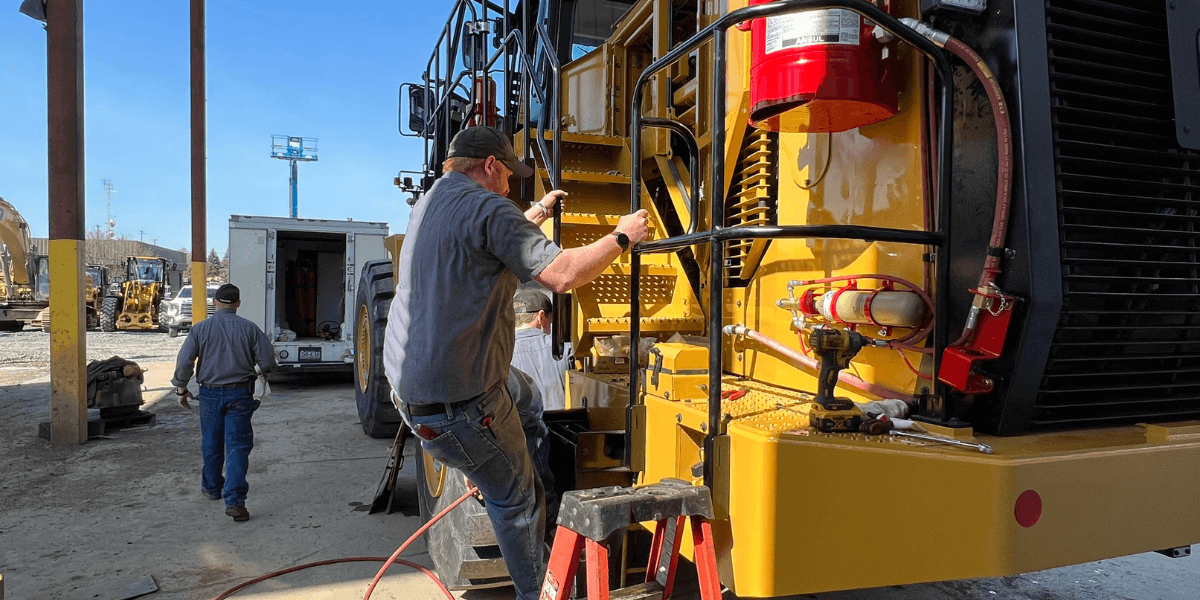CO2 Fire Extinguisher Is Used for What Type of Fire?

CO2 fire extinguishers are essential for handling specific fire hazards, but they aren’t suitable for every situation. "CO2 fire extinguisher used for what type of fire" is a common question, especially on Google, and knowing the answer can ensure proper fire safety.
This guide covers where CO₂ extinguishers work best, how they operate, and important safety considerations.
Key Takeaways
- CO₂ extinguishers are designed for specific fire risks and are ineffective on ordinary combustible materials like wood or paper.
- Safe handling is crucial, as improper use in confined spaces can create breathing hazards.
- Regular maintenance, including weight checks and nozzle inspections, ensures CO₂ extinguishers remain reliable in an emergency.
Introduction to CO₂ Fire Extinguishers
Fire extinguishers come in different types, and each is designed for specific fire hazards. Carbon dioxide fire extinguishers are widely used in environments where flammable liquids and electrical fires pose a risk. Unlike other fire extinguishers, they leave no residue, which makes them ideal for protecting sensitive equipment and confined areas.
Definition and purpose
CO₂ extinguishers work by displacing oxygen and rapidly cooling the fire, cutting off the flames’ ability to spread. Since they don’t use water or foam, they are safe for electrical equipment and effective against flammable liquid fires without causing additional damage.
These extinguishers are commonly found in server rooms, commercial buildings, and areas where water-based options could pose a hazard. Proper use ensures effective fire protection while preventing unnecessary damage.
Appropriate Fire Classes for CO₂ Extinguishers
Different fire extinguisher types are designed to tackle specific fire hazards. Carbon dioxide fire extinguishers are best suited for certain fire classes where water or foam could be ineffective or even dangerous.
Class B fires
CO₂ extinguishers are highly effective against class B fires, which involve flammable liquids such as gasoline, oil, petrol, solvents, and oil-based paints. These substances can spread quickly, and using water may worsen the fire.
Instead, carbon dioxide extinguishers smother the flames by displacing oxygen and eliminating the fire’s fuel source without leaving behind residue that could damage surfaces.
Class C fires
Class C fires involve energized electrical equipment such as wiring, appliances, circuit breakers, and power panels. Using water on these fires could result in electrical shock or further damage to the equipment.
CO₂ extinguishers are a suitable choice because carbon dioxide is a non-conductive extinguishing agent, so it's safe to use on electrical fires without the risk of electrocution or short-circuiting.
Since CO₂ extinguishers are specifically designed for these fire types, they are commonly found in server rooms, industrial settings, and commercial buildings where flammable gases, electrical equipment, and liquid fuels pose potential fire hazards.
How CO₂ Extinguishers Work
CO₂ fire extinguishers have a unique suppression method that allows them to put out fires quickly.
Mechanism of action
When a CO₂ extinguisher is discharged, it releases carbon dioxide gas under high pressure. This process works in two ways:
Oxygen displacement – Fires need oxygen to burn, and CO₂ works by pushing air away from the flames, suffocating the fire and preventing it from spreading.
Cooling effect – The rapid expansion of carbon dioxide creates an extreme drop in temperature, which helps cool the flammable liquids or electrical equipment involved in the fire. However, this sudden drop can also cause freeze-burn if the gas comes into contact with the skin.
Advantages
CO₂ fire extinguishers offer several benefits that make them ideal for certain fire hazards:
No residue – Unlike aqueous film-forming foam or wet chemical extinguishers, CO₂ leaves no oil-based or powdery residue, making cleanup easy and preventing damage to sensitive equipment.
Non-conductive – Since CO₂ is a gas, it won’t conduct electricity, making it a safe option for electrical fires in confined spaces or near delicate equipment.
Effective against flammable liquids – CO₂ extinguishers can put out class B fires, including those fueled by flammable gases, oils, and other liquid fire hazards.
Limitations and Safety Considerations
While carbon dioxide fire extinguishers are effective in certain situations, they have limitations and require careful handling to ensure safety.
Not suitable for class A fires
CO₂ extinguishers are not designed for Class A fires, which involve ordinary combustibles like wood, paper, and fabric. These materials can continue to smolder even after the flames are extinguished, leading to re-ignition.
Since carbon dioxide does not provide a cooling or soaking effect, it cannot fully eliminate these fire risks.
Health and safety precautions
CO₂ extinguishers release gas at high pressure, which can pose risks if not used properly:
Asphyxiation risk – In confined spaces, excessive CO₂ discharge can reduce oxygen levels, making breathing difficult. Proper ventilation is crucial when using these extinguishers indoors.
Freezing temperatures – The gas is stored under high pressure and expands rapidly when released, causing extreme cold. Direct contact can result in freeze burns on the skin.
Safe handling – Always use the safety pin and handle the extinguisher correctly to avoid accidental discharge. The black label on CO₂ extinguishers distinguishes them from other fire extinguishers.
Proper Usage and Maintenance
Using and maintaining carbon dioxide fire extinguishers correctly ensures they function effectively when needed. Following the proper steps for operation and regular upkeep can help save lives and prevent fire damage.
Operating instructions
To safely use a CO₂ extinguisher, follow these steps:
- Pull the safety pin – This breaks the seal and prepares the extinguisher for use.
- Aim at the base of the fire – Direct the nozzle toward the lowest part of the flames, not the smoke.
- Squeeze the handle – Press the lever to release the carbon dioxide discharge.
- Sweep side to side – Move the nozzle in a controlled motion across the fire until it is fully extinguished.
Since CO₂ extinguishers work by displacing oxygen, avoid prolonged use in enclosed areas without ventilation.
Maintenance tips
Regular inspections ensure fire extinguishers remain ready for emergencies. Your maintenance steps should include:
- Checking the pressure – Unlike other extinguishers, carbon dioxide extinguishers don’t have a pressure gauge, so they must be weighed to confirm they are full.
- Inspecting the nozzle and Hose – Ensure there are no obstructions that could prevent proper discharge.
- Confirming proper labeling – The class B marking and range specifications should be clearly visible.
- Scheduling professional servicing – Have CO₂ extinguishers tested and refilled by a certified technician as required.
Conclusion
CO₂ fire extinguishers are highly effective for flammable liquid fires and electrical fires, but they must be used correctly and maintained regularly. Knowing their limitations, safety precautions, and proper handling ensures they provide reliable fire protection when needed.
Total Fire Protection You Can Rely On

Fire safety isn’t just about having the right extinguisher—it’s about making sure your entire fire protection system is built for reliability. Swartz Fire & Safety offers CO₂ fire extinguishers as well as complete fire suppression solutions and expert maintenance to keep your business or facility protected.
From fire extinguisher inspections and recharging to custom fire suppression system installations, we provide services tailored to your needs. Our certified technicians ensure your fire protection equipment meets safety regulations and stays in peak condition.
If you're safeguarding commercial buildings, industrial facilities, or specialized areas with sensitive equipment, we have the expertise to help.
With over 35 years of experience, Swartz Fire & Safety is committed to delivering top-quality fire safety solutions across Central Pennsylvania. Contact us today to get the fire protection your business deserves!
Learn more about our services and products. Contact us today!
Frequently Asked Questions
What fires are CO2 extinguishers used for?
CO₂ extinguishers are effective against fires fueled by flammable liquids and those involving live electrical equipment.
What type of fire is CO2 used in?
These extinguishers are commonly used for fires where water or foam could cause additional hazards, such as fuel-based or electrically charged fires.
What class of fire is a CO2 fire extinguisher?
CO₂ extinguishers are designed for Class B and Class C fires, which involve combustible liquids and energized electrical components.
What is a CO2 fire extinguisher used to extinguish?
They are used to put out fires by cutting off the oxygen supply and rapidly lowering the temperature of burning materials.


